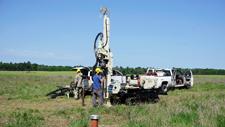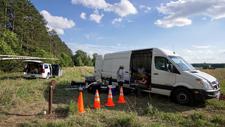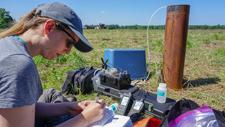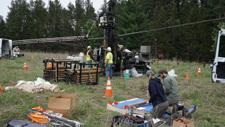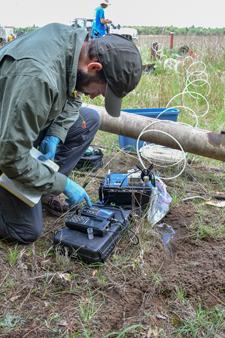Estimating hydraulic conductivity in glacial aquifers
Summary:
Estimating how easily groundwater flows through different aquifers is critical for groundwater management but is difficult to measure. We use nuclear magnetic resonance (NMR) logging to measure properties of the subsurface that are related to groundwater flow. In this project, we assess the ability of NMR to estimate how easily groundwater flows in a glacial aquifer in Wisconsin. By using NMR in different regional aquifers, we aim to establish NMR logging as an effective tool for estimating aquifer properties important for groundwater management.
Lead Investigator:
Rosemary Knight
Professor of Geophysics
Stanford University
Co-investigators:
James J. Butler, Jr., Senior Scientist, Kansas Geological Survey, University of Kansas
Randy Hunt, Research Hydrologist/Associate Director of Science, Wisconsin Water Science Center
Carole Johnson, Hydrologist, USGS, Office of Groundwater, Branch of Geophysics
Project description:
The Glacial Aquifer System is the largest (in aerial extent) source of groundwater for drinking water and public supply in the U.S., delivering water to 41 million people. Availability of water in the glacial system is often constrained by climatic conditions, poor water quality, hydrogeology, potential conflicts with current groundwater users, or the desire to maintain environmental streamflows and groundwater dependent ecosystems. The large aerial extent, range of climates, and complexity of hydrogeological conditions make generalized characterization of the glacial system difficult. Thus, new tools that move beyond traditional aquifer bulk property characterization are needed to efficiently determine the hydrogeological properties of the glacial system. These advances will help ensure that a science-based context is available for decision- making on local and regional water availability.
The focus of this research is the use of nuclear magnetic resonance (NMR) logging as a means of determining an important parameter for groundwater management, hydraulic conductivity (K). Hydraulic conductivity quantifies how easily water flows through the subsurface, and is used to estimate the productivity of groundwater wells and to estimate groundwater flow in computational models. Although there are numerous existing methods that can provide information about K, many have significant limitations.
The pumping test, a common field method, can be time consuming and expensive, and only provides large volumetric averages of K. Although K at this scale is sufficient for many water-supply investigations, it is often inadequate when water quality is of concern. In those cases, characterization of small-scale preferential flow paths and barriers is needed. To obtain such information, field measurements must be acquired at a much higher resolution. Compared to other field approaches, NMR logging can be performed rapidly and allows for high-resolution characterization of K with minimal well development.
Previous work has established NMR logging as a quick, reliable and cost-effective tool for groundwater applications but a robust methodology is still needed to estimate K from the measured NMR parameters. Typically, local calibration with other logging measurements is required to use NMR measurements to estimate K. This study will assess how well prior regional calibrations estimate K in glacial aquifers, and use a combination of field, lab and computational analysis to search for ways to reduce our reliance on local calibration.
Given the extensive use of the Glacial Aquifer System for drinking water and public supply, there is an urgent need to efficiently characterize its hydrogeologic properties to provide a scientific basis for groundwater management. Our research in the glacial aquifer system will improve our understanding of how NMR can estimate K across different regional aquifers and will help establish NMR logging as an important first-line tool for the characterization of hydraulic conductivity.
